Creating a workflow to use as a template for a job
In this tutorial, you will use the Workflow Designer app to create a workflow similar to the one created in the tutorial Scheduling a job using a resource pool with specific capabilities. This way, you will be able to reuse the workflow in as many jobs as you want, without the need to do the same setup and configuration each time.
Expected duration: 15 minutes
Note
The content and screenshots for this tutorial have been created using DataMiner version 10.5.5 and MediaOps version 1.3.1.
Prerequisites
- A DataMiner System using DataMiner 10.5.4 or higher.
- Access to the Workflow Designer application.
- Access to the Scheduling application.
- You have completed the tutorials Configuring resources and resource pools, Assigning capabilities to resources, and Scheduling a job using a resource pool with specific capabilities.
Overview
- Step 1: Create a new workflow
- Step 2: Add resource pools to the workflow
- Step 3: Configure the resource pools
- Step 4: Complete the workflow
- Step 5: Create a new job with the workflow as a template
Step 1: Create a new workflow
Navigate to the Workflow Designer app.
In the top-left corner, click + New workflow.
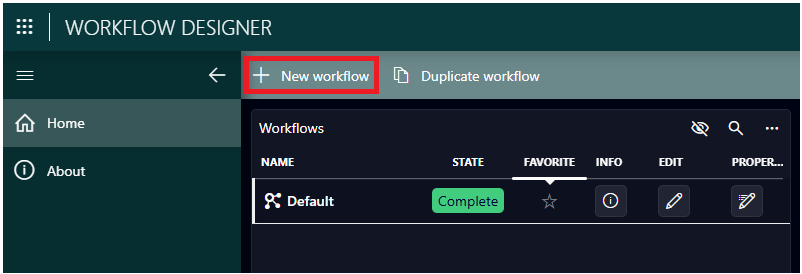
Specify a name of your choice in the Workflow name box, e.g. SDI/IP Base Workflow.
If you want the workflow to show up at the top of the list of workflows, select the Favorite box.
Click the Save button at the top.
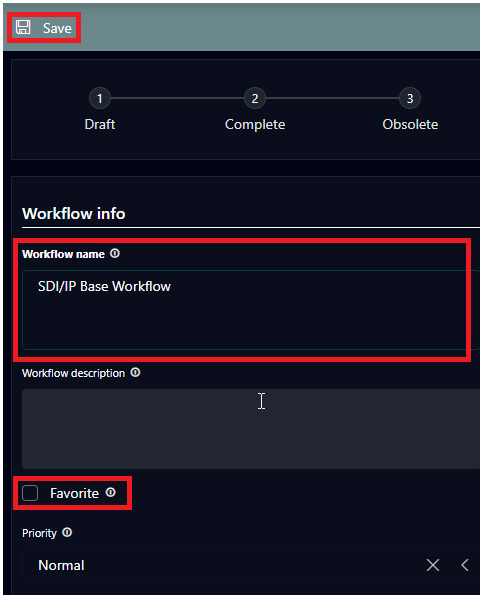
You should now see your workflow in the list on the left, for example:

Step 2: Add resource pools to the workflow
Select the newly created workflow in the list, and click the Add node button.

Select Resource Pool, and click Next.
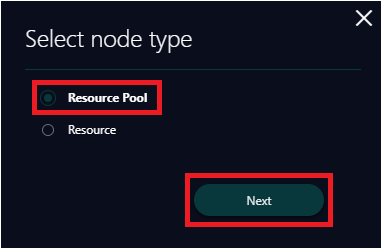
In the dropdown box, select the Converter resource pool, and click Save.
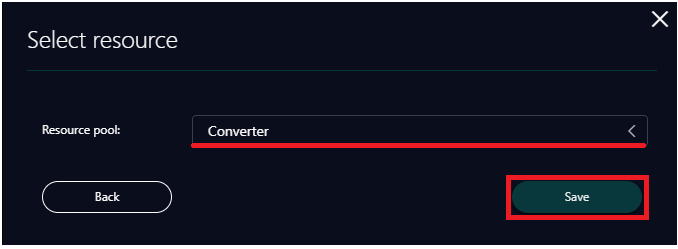
Select the newly added resource pool in the Selected workflow pane.
Expand the Node Actions menu at the top, and select Add After.

Again select to add a resource pool and select the Converter resource pool.
Your workflow should now look like this:

Step 3: Configure the resource pools
In this step, you will add some configuration to the workflow, so that one node will represent an SDI-to-IP device, and the other will represent an IP-to-SDI device.
In the Selected Workflow pane, select the Converter (1) node.
Expand the Node Actions menu, and select Configure Node.

In the pop-up window, select the checkbox and then select the SDI to IP option and click Create.
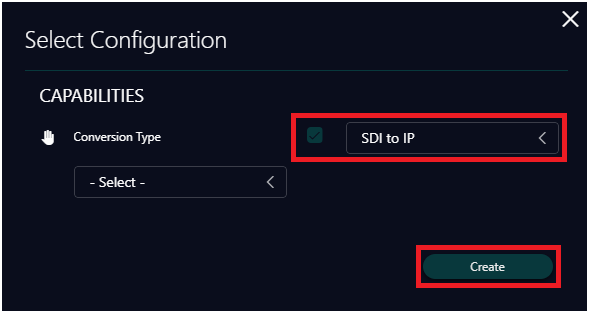
Select the Converter (2) node and repeat the steps above, but select the IP to SDI option instead.
You should have the same node configuration as in the tutorial Scheduling a job using a resource pool with specific capabilities.
Step 4: Complete the workflow
In order to be able to use this workflow in the Scheduling app, the workflow's state now has to be set to Complete:
Select the workflow you have just created and click the pencil icon in the EDIT column.
In the newly opened panel, click the Mark Complete button at the bottom.
Click the Save button at the top.
Step 5: Create a new job with the workflow as a template
Open the Scheduling app.
On the Job View page, click the + New button at the top.
In the Create job panel, specify a name of your choice for the job.
In the Start Time and End Time boxes, customize the timing for the job so that it does not start executing right away.
In the Workflow box, select the workflow you created earlier, e.g. SDI/IP Base Workflow.
Click the Create Job button.
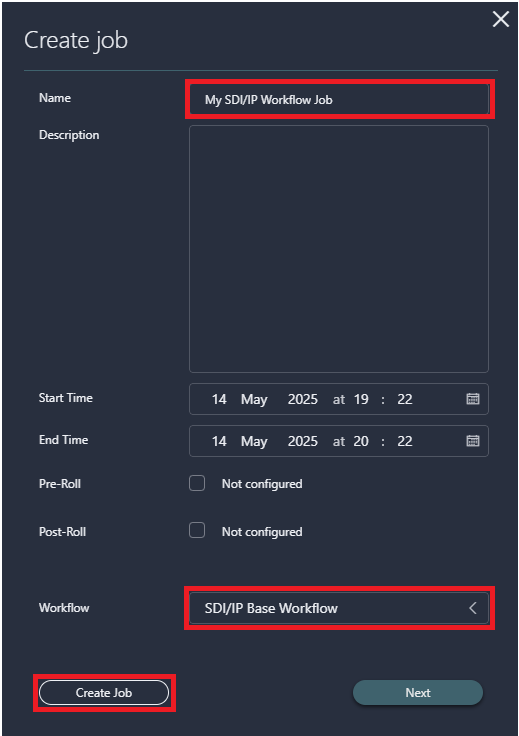
You should now see your job on the timeline. A red hand symbol will be shown in the box representing the job, which means that resources still need to be selected before the job can be executed.

Click the pencil icon to open the edit panel for the job.
In the Nodes section, pick the Video Solutions 001 resource for the first resource pool, and the NewTek 001 resource for the second resource pool.
This is done in the same way as in the tutorial Scheduling a job using a resource pool with specific capabilities, so you can refer to that tutorial for more details.
Scroll up to the Job Info section.
Click the Save as Tentative button.
Click the Confirm Job button.
You have now created a job that uses the encoder and decoder resources with a predefined workflow.